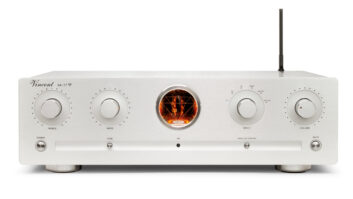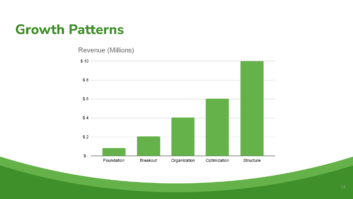The annual Electronic Entertainment Expo (E3) has often been described as, “The CES of the game world.” At every event, console manufacturers and independent third-party publishers such as Ubisoft, EA, and others showcase their latest software offerings. It is the rare E3 where we see the introduction of one new hardware platform, let alone two. This year’s E3 was just that sort of event, with Sony and Microsoft showing the platforms and content for their “next-gen” consoles.
With that, one would have expected lots of discussion about processor speeds, connection types, gigaflops, video memory, and other technical mumbo jumbo. Surprisingly, that was not the case. Talk about connectivity? Yes, but in a different direction than what the pre-show teases led us to expect. Fancy new motion-driven controllers? Yes, kinda sorta, but not really even mentioned by Nintendo, the company responsible for starting that type of game input. Content services made possible by the new hardware? Not a peep about them during Microsoft’s pre-show press event and only a passing mention during Sony’s with the presenting executive going to length to say that they were part of the gaming experience. Nintendo? For the first time in E3 memory, they didn’t even hold a pre-show event and thus didn’t even have a venue to talk about content services even if they wanted to, and clearly they didn’t.

Yes, despite the development of new hardware platforms, this year’s E3 was all about the games.
Sitting through preview after preview of the forthcoming games with little, if any, mention of how the new hardware enhances their reality was strange, but perhaps understandable. Game consoles as a market are facing pressure from the games played on smartphones and tablets by casual gamers and by the hard-core gamers who use PCs. To keep both casual and hard-core gamers coming back to consoles, rather than defecting to other devices, the messaging then becomes clear: It’s all about the games.
With that, and again in the face of the incredible build up for the place of game consoles in the streaming media environment, particularly from Microsoft in their late May tease, you would be right to ask if these devices hold any interest for the custom world anymore. To that, we still answer a resounding yes.
The obvious answer is that you will find gamers of all stripes within the families of your clients, so there will certainly be a call for you to install them. That will definitely require some changes as to what you do and how you do it. Secondly, streaming services or not, all of the consoles, new and old, are network-centric and that requires more work on your side. There are other items and issues that make these new consoles attractive, but at the end of the day it is still a fair bet that despite the “games only” attitude at E3, the new consoles will become portals for streaming services.

In conjunction with the increased processing power of Xbox One, the new Kinect, bundled with the console, can sense and render with high accuracy and even report heart rate.
Xbox One vs. PS4
Before getting to the differences between Xbox One and PS4, let’s go to the basics. Both were said to be available this year, though the exact dates are still subject to some speculation. Microsoft said “November” and Sony said “this holiday season.” In terms of pricing, Xbox One will launch at $499, a full $100 more than the price for PS4 at $399. Note, however, that while both systems include the console and a controller, Xbox One also comes with the new Kinect, something that sets you back about $129 at list price while it will cost an additional $59 to add the PlayStation Camera. Draw your comparisons accordingly. Unlike with Xbox 360, Kinect is an essential part of the new system so price aside, bundling it as standard makes sense, but it does raise the initial cost of entry.
Price and games aside, there are similarities to the two systems. Both will launch with built-in 500Gb drives, both have built-in 802.11 b/g/n connectivity for wireless broadband access, both are based on an AMD processor and will be equipped with 8GB of RAM, and both feature a built-in Blu-ray drive for movies and music playback as well as for game load-in. Both include USB 3.0 connectivity and feature internal–rather than an external–power supply as is the case for the current Xbox. Both are black (at launch) and both are rather angular and square-ish compared with the pinched-waist look of the Xbox 360 and the “you can’t stack anything on top of it” rounded top of PS3. Both will come with updated controllers; you definitely cannot use the current Xbox controllers with Xbox One and the same will probably be the case for using current controllers with PS4.
Resolution and Connectivity Questions
There are also some key things beyond the exact launch dates that are still unknown. Neither brand would provide full details on 4K support, even though what we do know about the hardware points to 4K games as being a possibility. No word on when we might see 4K games, if ever, or whether or not the Bluray playback will be upscaled. Since the long-awaited “HDMI Next” specification was still not announced as of E3, there was no comment on whether or not the new boxes will be compliant with that.
Along with the great improvement in the realism of the Xbox One games (and, to be fair, PS4 games, as well) due to the advanced hardware architecture, Xbox One will have at least one of their franchise titles, Halo, render out at 60fps. Thus, while we don’t really expect any 4K games for a while, at least high frame rate is on the near-term horizon and it was stated that the Xbox One will pass through 4K content, albeit likely limited to 24p or 30p unless they pull a rabbit out of their hats with the new HDMI standard.


Don’t bother to look for analog video connections on PS4 or Xbox One. There aren’t any. More important for systems integration, there was no word if either of the brands would have “home theater remotes” designed for disc and media navigation rather than game play, as both of the current systems and a number of third-party companies offer. Xbox One uses WiFi Direct, so that would require a new remote, and it will certainly provide some level of challenge with regard to integration. Similarly, we don’t know if there will be a similar product for PS4 or if the codes and commands over Bluetooth will allow use of current remotes. It should be noted that Microsoft’s “Smart Glass” apps for iOS, Android, and Windows 8 phones can control the current and pending consoles and if you will be able to use a Sony Vita to control a PS4.
With regard to connectivity, remember that you will need HDMI for both these systems, although each does have an optical port for digital audio. There is simply no analog connectivity on Xbox One and the AUX port on the PS4 is for the Play- Station Camera with no mention in the spec sheet of analog adapters. Thus, if you are called to replace a current generation console with one of the next-gen models, where composite or component video is now in use, a new TV will be required.
As reported from their pre-launch event, Microsoft’s Xbox One will have an HDMI pass through so that you can use its media management capabilities for traditional program content when connected to a cable box or satellite STB. While nothing more was said about that at E3, the “all-in- one” concept was certainly touted by Microsoft not only in its booth signage, but in stickers on all the rest room mirrors. We’ll have to wait for more information on the details, but suffice to say that this in-line connectivity is something you will have to play for.
The price of this integration, as well as the way in which Xbox One will operate is that a persistent broadband connection is required. If the console goes more than 24 hours without the ability to authenticate to the Xbox servers, you won’t be able to play (most, if not all) games. Blu-ray playback and live TV viewing is not impacted by this restriction.
While it may be a small thing, it should be noted that the new PS4 has both of its USB 3.0 connection points on the front panel while Xbox One has two on the rear panel and one at the front edge of the left side. That means you won’t be able to flush mount the Xbox One and still have access to the USB port if required.
It seems clear, though not 100-percent confirmed, that the architecture of the new systems is sufficiently different and that legacy games will not play back on the new systems. That is important for input-constrained installations, as you will need to keep the existing Xbox 360 or PS3 to play your clients’ current games. PS3 games will be available to PS4 owners via download, but it was not clear if this would require an additional purchase. Thus, if you are adding a new console to an existing system, remember the input needs.
Kinect was optional for Xbox 360 and Move for PS3, being used only in specific games that were designed to take advantage of the motion and position-sensing capabilities. (The Wii Bar, of course, is part and parcel of both Wii and Wii U.) Move seems to be less in the plans for PS4, and no games using it were demonstrated at E3, but Kinect is key to Xbox One, even when it is not essential to the game play. That means you will have to make sure it is installed with any Xbox One.
The new Kinect makes installation a bit easier in some regards as it has a greatly improved horizontal and vertical field of view. It also has better depth capabilities working from about 2.5 feet to over 15 feet. That means no accessories will be needed for use in smaller rooms or when there are more people playing. That said, the connection is still a fixed cable using a proprietary connection to the rear panel; there are no “extension cords” or wireless for Kinect, yet.

Microsoft did not mention the media connectivity functions of Xbox One in its press event, but did place ads about it on all the restroom mirrors. The best part of the new Kinect, however, is yet to be explored. Thanks to a full HD 1920×1080 sensor and improved IR sensing, Kinect can do neat things like heart rate sensing and much more accurately track body mechanics with regard to position, motion, and force. Beyond the use for system control and game input, the home health and monitoring potential for this is obvious. As has been the case with the first Kinect, a Kinect for Windows SDK will be available for $229 that may result in some interesting applications where there isn’t even an Xbox involved.
Replacements Not Necessary
Where does all of this leave you in planning for the new consoles and seeing how and where they co-exist with current game systems? First, don’t plan to have the new replace the old; any gamer worth their salt will want both. Second, be certain that along with this you have at least two more HDMI inputs available on the display, AVR or surround processor, as you’ll need them. Analog connections? Not for these games. Networking? Beef it up, as the games will consume and trade data massively. Game consoles with Blu-ray playback, Netflix, Hulu, and other streaming services in place of a player upgrade? For a few hundred dollars more than a plain player, this is not a bad idea. (WiiU excepted). More labor to fit in another Kinect? You bet, and same for the new PlayStation Camera, although it seems not to be as integral to the PS4 as Kinect is to Xbox One. Short on rack or cabinet space? That will be a problem, as moving to the new Xbox or PlayStation may not mean that you’ll be able to move the current system out.
Yes, despite the development of new hardware platforms, this year’s E3 was all about the games. That said, when you look at the market direction, the integration of streaming services, and physical disc playback, depending on the specific game, the integration of social media, portable devices, video chat or Skype and all the rest, it’s more than games; it’s about the total system.
Michael Heiss ([email protected]) is a CEDIA Fellow and contributing writer to Residential Systems, based in Los Angeles, CA.







